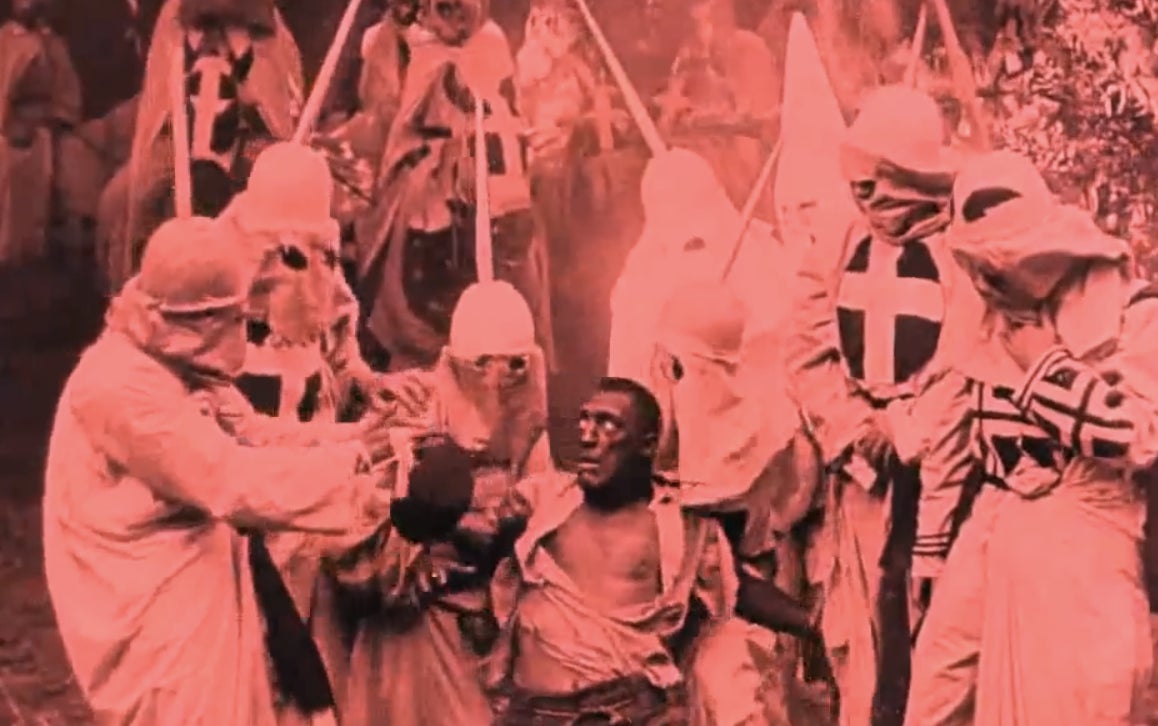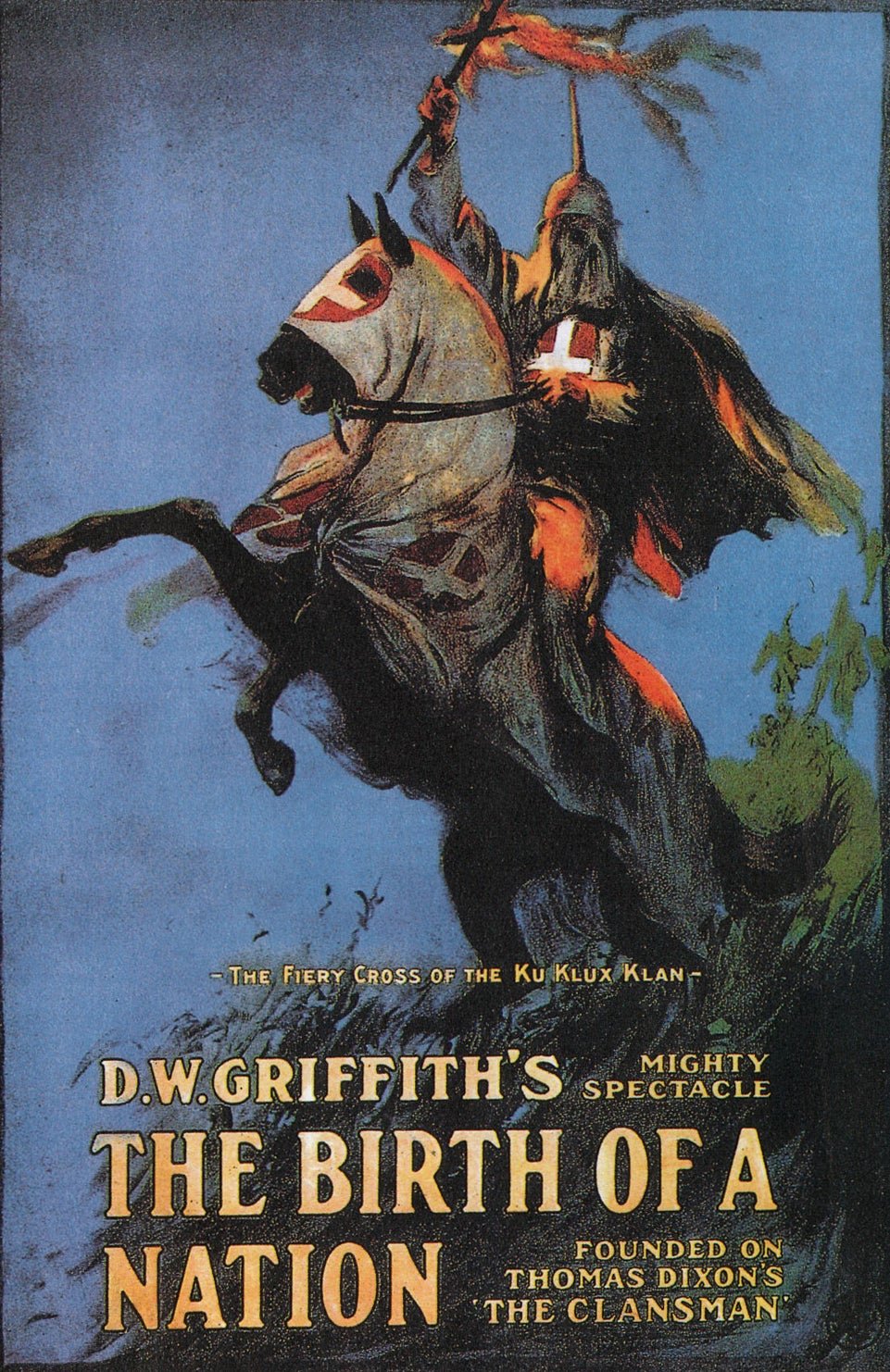This incredibly racist film was the first movie ever to screen at the White House
Last month President Obama welcomed the film Selma into the White House – a first-family showing that, as it happens, occurred a century after the first-ever screening of a movie inside the White House.


Last month President Obama welcomed the film Selma into the White House – a first-family showing that, as it happens, occurred a century after the first-ever screening of a movie inside the White House.
For on February 18, 1915, a very different president, Woodrow Wilson, showcased what was then a revolutionary form of entertainment: the feature film. Wilson, his daughter Margaret and select guests gathered in the East Room to view director DW Griffith’s just completed masterpiece, The Birth of a Nation.
But where Selma’s White House screening was a crowning moment for a film that has generally garnered rave reviews from black film critics, the response in the black community to the overtly-racist The Birth of a Nation was overwhelmingly negative. The controversy came to a head in Boston, where a largely-forgotten Civil Rights activist led mass protests in an effort to ban the film.
Audiences blown away by innovative film
The president had agreed to host a movie night as a favor to the writer Thomas Dixon, an old college buddy, a fellow Southerner – and an unapologetic racist. Dixon’s bestselling novel The Clansman was the basis for filmmaker DW Griffith’s three-hour dramatization of the Civil War and Reconstruction, which depicted Ku Klux Klan members as heroes and martyrs.
Griffith later bragged to a reporter from the New York American that “The Birth of a Nation received very high praise from high quarters in Washington.” Coy about presidential name-dropping, he continued, “I was gratified when a man we all revere, or ought to, said it teaches history by lightning.”
Wilson had loved the film. So did most of the viewing public.
Audiences were swept away by Griffith’s storytelling prowess, in awe of his recreation of Civil War battles and his innovative film techniques – scenes shot from multiple angles, the close-up and the fade-out, to name a few. Viewers wept, cheered and jumped to their feet at different moments in the epic story. Heaping praise, one Atlanta Constitution critic later gushed, “Ancient Greece had her Homer, modern America has her David W. Griffith.”
To most Americans, the production was flawless. But there was a major fault: the film’s bigotry. Griffith portrayed blacks as heathens and sexual predators, undeserving of emancipation and unfit to exercise newly gained voting rights – in short, as a danger to American values. Meanwhile, the KKK was portrayed as a healing force, riding to the rescue to restore order amidst the chaos and lawlessness of Reconstruction.
Trotter and NAACP respond to film’s racism
The movie triggered mass protests across the nation, a rolling thunder that rumbled loudest in Boston. Leading the charge was a now largely forgotten civil rights leader and newspaper editor named William Monroe Trotter, a Phi Beta Kappa graduate of Harvard whose father had fought for the Union as an officer in an all-black regiment from Boston.
During a hearing early that April at Boston’s City Hall before Mayor James Michael Curley, Trotter argued that Griffith’s film was pure racist propaganda. In a bid to convince Curley – who also acted as the city’s Culture Czar – to banish the film (as he had controversial stage plays), Trotter claimed Griffith’s bigoted take on blacks was designed “to rouse the passions of white men to a hostile, retaliatory, even murderous feeling toward Colored men.”
Though censorship in America is almost unheard of today, in the context of the time, Trotter and other black leaders from Boston’s branch of the fledgling NAACP had every reason to think Curley would ban Griffith’s work. For one thing, no less a body than the US Supreme Court had ruled film did not warrant the First Amendment’s protection for free speech and expression. The previous month, in Ohio v. Mutual Film, the court unanimously decided that movies were not art but a business – and thus subject to government regulation.
Yet the Boston mayor refused to budge, allowing the film’s showing to proceed. “You have introduced no evidence that I could use in stopping at least one performance,” Curley told Trotter and other anti-film militants.
In response, a defiant Trotter drummed up a call to action, leading protests that played out throughout the spring on 1915 in every venue imaginable: city hall, the courts, the state legislature, the streets. Foreshadowing the Civil Rights Movement of the 1950s and 1960s, the organized demonstrations featured several thousand marchers. During one protest outside the movie theater, Trotter and others were arrested by Boston police and hauled away.
Trotter certainly knew that calling attention to the film had the unintended consequence of fueling public interest and ticket sales. But he also knew that to not speak out – to swallow the film’s racism – would be worse. It was as if he understood the new medium’s potential power to shape public opinion – that he might circulate a year’s worth of newspapers and still not reach the numbers of people filling movie houses around the country. The writer Dixon was one who surely understood the potency of “moving pictures.” In a letter that spring to President Wilson, he riffed on harnessing that power for electoral politics.
“The next political campaign may witness a revolution in political method,” he wrote. Old media – meaning newspapers – were old hat, he said. “We have launched a cyclone before whose beast the press is a zephyr.”

Trotter’s legacy
The protest story of 1915 became equal to the film’s prominence, so that one cannot consider the debut of Griffith’s film at the White House without taking on the other. Trotter’s militant refusal to accept a film – regardless of its artistic value to the medium – indicated his awareness of the damage it could cause. The film was ultimately part of a long line of post-Civil War literature that sought to reshape the events of the Civil War and Reconstruction – and return blacks to a position of inferiority.
While today The Birth of a Nation is considered a virulent brand of hate speech, the stereotypes of blacks embedded in the film – their depiction as lawless brutes and a danger to American values – continue to haunt public discourse about race in America. Whether it’s the shooting of Michael Brown in Ferguson, Missouri or the police killing of Eric Garner in New York City, many continue to frame racially charged tragedies in similar terms.
Unfortunately, Trotter’s concerns were not just rooted in 1915 America, but echoed throughout the century – and into this one. Trotter, scholar and journalist Lerone Bennett Jr. later wrote, “was a true pioneer, decades ahead of his time.”
Follow Dick on Twitter at DickLehr.com. This post originally appeared at The Conversation.